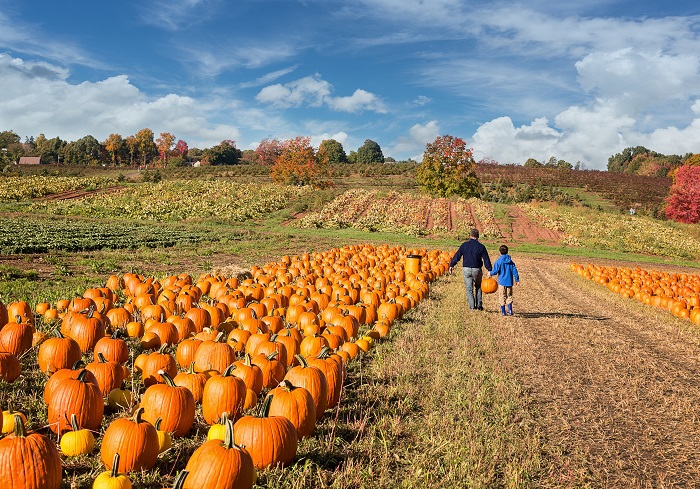
Halloween isn’t usually thought of as a big consumer holiday, but the lead-up to it has given rise to a peculiar trend among U.S. shoppers: a deep and abiding love for pumpkin flavoring. Fast becoming a symbol of the start of fall, pumpkin flavoring can now be found in everything from fresh diary products and coffee drinks to baked goods and yogurt. There are even pet products that come imbued with a little essence of pumpkin.
All this attention on pumpkin-related products has some retailers asking themselves if consumers are really crazy for the orange gourds.
According to a new report from Nielsen, the answer is a resounding “no.”
Even though Nielsen found that sales for pumpkin-flavored products accounted for $361 million in sales in 2014 (a 79-percent spike from 2011), there just doesn’t seem to be much demand for pumpkins themselves. Overall, pumpkin sales have steadily declined for several years, and unit sale losses from 2011, 2013 and 2014 comprise 8.6 million lost pumpkin sales.
“The rise of the whole pumpkin spice and pumpkin lattes and pumpkin flavors really hasn’t done much for pumpkins at retail,” Sarah Schmansky, Nielsen Perishables Group’s Director Retail Program, told CNBC.
What are customers buying, then? Nielsen found that pie filling dominates the pumpkin-flavored product market with almost $135 million in sales since 2014. Cream products tallied about $46 million, and pumpkin-infused coffee blends accounted for $32 million. Surprisingly, consumers have even shelled out a hair under $13 million so their pets can enjoy the seasonal bliss of pumpkin-flavored dog foods.
Retailers have certainly attempted to capitalize on this trend. The San Francisco Chronicle counted more than 60 pumpkin-related products on the shelves at Trader Joe’s, a normally niche grocer. However, could the glut of pumpkin spice, filling and crackers be having a negative effect on consumers?
“Some of these [products] make perfect sense, such as pumpkin pie, pumpkin soup, even pumpkin ice cream,” The SF Chronicle wrote. “But a few seem like a stretch. Do you really need to spread pumpkin cream cheese on your pumpkin bagels? And dip pumpkin tortilla chips into pumpkin salsa?”
Rather than having an inverse effect on sales, data from Nielsen suggest that retailers’ efforts to saturate the pumpkin-flavored product market are simply falling on deaf ears. According to the study, 72 percent of consumers only indulge in a single pumpkin-spiced latte — a focal product of the recent trend — every year. Those who go back for a double dip only account for 20 percent of the market, and the pumpkin spice fanatics who buy more than three drinks per year and who retailers are ostensibly devoting the majority of their advertising and merchandising efforts toward only comprise a scant 8 percent.
Where might retailers be able to fine-tune their fall campaigns to better exploit the obvious interest in pumpkin products? Nielsen thinks it might be health foods.
“While 50 percent of U.S. consumers are actively trying to lose weight, they’re overlooking fresh pumpkin to satisfy their craving, instead opting for indulgent treats like baked goods, dips and sweets, where sales have steadily increased,” Nielsen wrote.
However, obtaining the high-quality pumpkins that health-conscious consumers crave might be more difficult this season. Delaware Online reported that Libby’s, the largest producer of pumpkins in the U.S., will only be able to produce about half of its usual output due to damaging summer weather.
“We think we’ll have enough pumpkins to get consumers through the important Thanksgiving holiday,” Roz O’Hearn, a spokeswoman for Nestle USA, Libby’s parent company, told Delaware Online.
The craze for pumpkin products is still relatively new, and retailers that approach the problem from a new angle instead of flooding the market with a glut of options have room to grow.